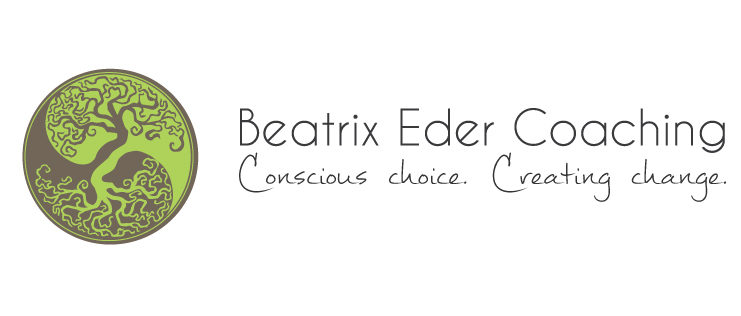
Equity throughout the employee life cyle – part 1
Five best practices for equitable hiring
Across the world, merit is widely considered a fair and legitimate principle for guiding employment decisions in organizations and in public affairs, such as educational systems.
In order to stay competitive, companies need to select, hire and retain the best talent. Many organizations (and governments) today have established a system of meritocracy which means recruiting and promoting people based on their abilities, effort and performance with the intention to promote equitable treatment and opportunities for everyone.
The framework of a meritocratic system aims for evaluating people solely on their skills and performance and not based on their gender, age, race, physical appearance, personal orientations or their connections. Meritocratic systems might also be called “people analytics” as they are based on setting up processes and then monitoring and evaluating outcomes. A meritocratic system is effective and motivating for individuals who are able to perform according to the defined standardized expectation.
The challenge with meritocratic system
The problem that appears often in meritocratic systems is how “merit” is defined and measured. Empirical studies show that meritocratic systems tend to reward those who already are set up for success thanks to their socio-economic background, resources, acquired tools and their support network. Two key challenges of meritocratic systems are that
- the playing field is not level
An example to illustrate this is the culture of “always available and always mobile” which then shows an employee’s commitment and loyalty to the employer. The prevailing gender roles - with women being the main caregivers for children and elderly – take out the wind of women’s sales and make it harder for them to get to the top of their organization while delivering double shifts of work in the office and at home.
- decision-makers might be biased in recognizing abilities, effort and performance of certain individuals
Women tend to use a different language to express their ambition or share their success. Women also tend to be perceived differently when they express their ambition or share their success: compared to men, there are higher social risks involved for women. When communicating their ambition or expectations for salary and benefits, women are easily perceived as “pushy / aggressive / less nice” while men are perceived as “assertive / confident / results-oriented”.
A study called Ambition and Gender at Work conducted by the Institute of Leadership and Management in 2011 showed that managers often associate their male team member’s success to skill and their failure to bad luck; whereas for women they tended to associate their success to luck or the task being easy.
Meritocracies substituting one form of inequality with another
The sociologist Michael Young published more than 60 years ago his book The Rise of Meritocracy and anticipated that meritocracies will not solve problems of inequality and social status but rather substitute one form of inequality for another.
Alan Fox, a colleague of Michael young and another industrial sociologist wrote that meritocracy is “the society in which the gifted, the smart, the energetic, the ambitious and the ruthless are carefully sifted out and helped towards their destined positions of dominance, where they proceed not only to enjoy the fulfilment of exercising their natural endowments but also to receive a fat bonus thrown in for good measure”.
In 2010, Emilio J. Castilla of MIT’s Sloan School of Management conducted research on meritocratic systems in organizations and concluded that despite the good intention, these systems inadvertently engage in non-meritocratic behavior and thus perpetuate the disadvantage of groups with less power such as women and minorities. (If you are interested in the details of the research, you can read The Paradox of Meritocracy in Organizations here).
How to create more equitable organizations?
So, all this begs the question, how different systems (organizations, educational institutions, governments) can create more equity that truly allows for fair access to resources, support and opportunities?
There are several components of corporate culture such as
- hierarchy,
- power structures,
- policies and processes,
- symbols,
- stories,
- rituals and routines.
Corporate culture = Policies + Practices
In a simplified way, these components focus on two big areas that work together like cogwheels:
- Policies
- Practice
Together, they influence whether a company’s culture is rather collaborative and equitable or dominant and biased. There are many companies that have an impressive number of policies that were created to enhance fairness and equal access to opportunities. Equally, there are lots of companies that invest time and energy in creating a collaborative and equitable culture by training employees, sponsoring them for coaching and considering not only WHAT is being achieved by employees but HOW.
And yet, every phase of the employee life cycle can be derailed from an equality, diversity and inclusion perspective.
Let’s look at five practices in the early stages of the employee life cycle: pre-hiring and recruitment.
1) Your brand representation
How does your marketing and branding look and how do they position you as an employer of choice? What are the images and words used on your website, in your recruitment literature or your annual business report?
If you want to cultivate diversity, inclusion and equity, best is to know the different communities in your target audience and connect with them in a meaningful way. Use inclusive words and state your commitment to creating an inclusive workplace.
2) Direct, online applications
Is your website fully accessible for people with different abilities? People with impaired vision might want to change the font size; people with dyslexia might be disqualified through online testing while they might have the aptitude to perform the role. Berkeley Web Access is one website that can help you with making your company website accessible for everyone.
3) Diversity requirements when working with recruitment firms
Consider at least one company that specializes in sourcing diverse candidates and discuss with them where they will source their candidates from. Candidates represented for any given role must have both women, men and candidates with diverse backgrounds.
In Singapore, there is for example the company Diversely that helps organizations across the world find the best talent and reach diverse talent groups.
4) Contextual recruitment
This approach takes a more holistic view of candidates: instead of primarily looking at academic achievements, they also consider socio-economic challenges of the candidates. What were the obstacles they needed to overcome to achieve their certificates / diplomas? How much more determination, grit and resilience did they have to bring compared to candidates who have a more comfortable and supportive socio-economic background?
5) Strengths-based interviews
The classic interview questions focus on competencies, meaning on your skills that you have acquired so that you can perform certain tasks and roles in a competent way. The disadvantage is that many people are good at certain things but they do not necessarily enjoy them and that affects their enthusiasm and energy levels.
Strengths-based interviews will look closely at those competencies that are rarely taught in formal education and people will usually have no certificates and diplomas about them. Strengths are qualities that we have and that not only we are naturally good at but we also enjoy doing.
When you interview people for their strengths, you find the most suitable person based on what they are competent in AND what they enjoy.
Conclusion
As businesses work toward increasing growth, creating value and social capital, they need to differentiate from other market players and innovate to secure market share. Diversity is a fundamental element of creativity and innovation, yet it only works when it is enabled through inclusive leadership.
If you are truly committed to making workplaces more inclusive and more equitable, you need to work both on policies and practices to attract and retain the best and most diverse talent.
********************************************
Was this article helpful?
Here are some ways I can support you and your organization:
Get Individual leadership coaching with Beatrix
Deepen and accelerate your learning with one-on-one coaching with Beatrix. Identify and transform patterns and learn new tools that will help you to practice Inclusive Leadership at Work & Home and effectively work with people across differences in identity, experience and power.
Inquire about Individual Coaching here.
Get group coaching with Beatrix
Team coaching is a mid-term process with regular sessions that support a team in an individualized way to improve both the improvement of task-execution as well as the collaborative alliance within the team. The process supports teams to become more cohesive, increase their ability to problem-solve and become more competent in transforming overt and covert conflicts.
Inquire about Group Coaching here.
Book Beatrix for a webinar / workshop / training
Beatrix facilitates virtual and in-person workshops using experiential, interpersonal and reflective activities to share knowledge around Inclusive Leadership, inspire vision, ignite change and build workplaces that are diverse and cohesive. Participants will be supported to embrace new perspectives about differences and translate freshly gained knowledge into concrete actions.
Sessions are customized to your needs and can be delivered in 90-minutes to 3 hours.
Inquire about Webinars and Workshops here.
Get support with Organizational Consulting
Beatrix can help your company to co-create creative and cohesive teams that work effectively in a hybrid work environment, using effective feedback systems, collaborative decision-making processes and respectful communication norms.
Inquire about Organizational Consulting here.



